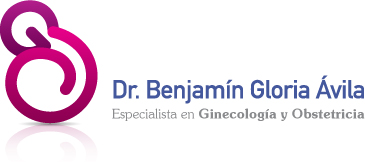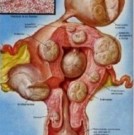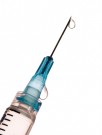|
El parto que comienza antes de la semana 37 se llama "pretérmino" o "prematuro". La Organización Mundial de la Salud define como pretérmino a aquel nacimiento de más de 20 semanas y menos de 37. Embarazo de alto riesgo en Puebla Dr Benjamin Gloria Ginecologo
Aproximadamente 1 de cada 10 bebés nacidos en los Estados Unidos es prematuro. Un parto prematuro es una de las principales razones por las cuales los bebés nacen discapacitados o mueren. Pero, el buen cuidado prenatal mejora las probabilidades de que a un bebé prematuro le vaya bien. Las tasas de mortalidad neonatal han disminuido en los últimos años debido a la mejoría de los servicios de cuidados intensivos neonatales y a un mejor acceso a los servicios de salud; actualmente sobrevive más del 50 % de los neonatos de 25 semanas, y más del 90 % de los neonatos por encima de las 28 a 29 semanas.

Signos y síntomas de un parto prematuro
Sangrado y cólicos en el vientre.
Contracciones o presión en la ingle o los muslos.
Líquido que se filtra desde su vagina en gotas o en chorro.
Sangrado vaginal rojo brillante.
Una secreción espesa y mucosa con sangre.
Más de cinco contracciones por hora o contracciones que son regulares y dolorosas
Contracciones que se vuelven más prolongadas, más fuertes y más próximas. Cólicos en el vientre.
Causas de un parto prematuro
Los problemas o resultados de exámenes que se presentan durante el embarazo y que pueden llevar a un parto prematuro abarcan:
Embarazo múltiple (Por sobredistención uterina)
Infección en la madre o en las membranas alrededor del bebé
Ciertos defectos del desarrollo fetal
Hipertensión arterial en la madre
Diabetes Mellitus
Cuando la bolsa de agua se rompe de forma temprana
Demasiado líquido amniótico (Polihisdramnios)
Sangrado en el primer trimestre
Cuando el cuello uterino no permanece cerrado por su cuenta (insuficiencia ístmico-cervical).
Anomalías o malformaciones uterinas.
Mal funcionamiento de la placenta, desprendimiento prematuro de placenta y placenta previa.
Los problemas de salud de la madre o las opciones de estilo de vida que pueden conducir a un parto prematuro abarcan:
El hábito de fumar (las mujeres fumadoras tienen 20 a 30 % más probabilidad de tener un parto de pretérmino)
Consumo de drogas ilícitas, a menudo cocaína y anfetaminas
Estrés físico o psicológico grave
Aumento de peso deficiente durante el embarazo
Obesidad
El cuidado prenatal reduce el riesgo de tener al bebé demasiado temprano. Intente estar lo más saludable que pueda antes de quedar embarazada. Si es posible acuda a consulta 3 meses antes de planear embarazarse.
Asegúrese de recibir cuidado prenatal y manténgase al día con las consultas y los exámenes recomendados.
Reduzca el estrés durante el embarazo.
Evite las carnes crudas y quesos no pasteurizados ("crudos") que conllevan un riesgo de infección por listeria.
Llame al médico inmediatamente si nota cualquiera de estas señales antes de la semana 37 del embarazo:
Cólicos, dolor o presión en el abdomen (vientre) Manchado, sangrado, mucosidad o líquido acuoso proveniente de la vagina
Repentino aumento en el flujo vaginal
Se requiere en estos casos realizar un examen clínico para ver si usted está teniendo un parto prematuro. De ésta forma se verá si el cuello uterino se ha dilatado (abierto) o si se ha roto la fuente.
Dependiendo del resultado de la exploración será la conducta a seguir. Básicamente se intentará detener el proceso de manera ambulatoria o en hospital según amerite el caso o se realizará una cesárea en caso de que las condiciones sean muy adversas. Se puede realizar un cerclaje de emergencia si las condiciones lo permiten.
El riesgo de recurrencia de un parto pretérmino en mujeres con antecedentes de prematuridad, oscila entre 17% y 40 % y parece depender de la cantidad de partos pretérminos previos. La literatura 10 ha reportado que una mujer con parto pretérmino previo, tiene 2.5 veces más riesgo de presentar un parto pretérmino espontáneo en su próximo embarazo. Cuanto más temprana es la edad gestacional en que se produjo el parto pretérmino anterior, mayor el riesgo de un nuevo parto de pretérmino espontáneo y precoz.
El manejo exitoso del trabajo de parto pretérmino incluye prevenir la enfermedad neonatal cuando sea posible, incluyendo el uso de corticoides, realizar profilaxis contra el estreptococo grupo B cuando sea necesario y reducir el traumatismo y la asfixia durante el parto. Los recién nacidos de pretérmino, deben nacer en un lugar que cuente con personal experto en resucitación neonatal y que pueda proveer cuidados intensivos cuando fuera necesario.
Referencias bibliográficas
1. Hack M, Fanaroff AA. Outcomes of children of extremely low birthweight and gestational age in the 1990s. Early Hum Dev 1999; 53: 193-218.
2. Hack M, Taylor HG, Klein N, Eiben R, Schatschneider G, Mercuri-Minich N. School-age outcomes in children with birth weights under 750 g. N Engl J Med 1994; 331: 753-9.
3. Tucker JM, Goldenberg RL, Davis RO, Copper RL, Winckler CL, Hauth JC. Etiologies of the preterm birth in an indigent population: Is prevention a logical expectation? Obstet Gynecol 1991;77:343-7
4. Goldenberg RL, Hauth JC, Andrews VW. Intrauterine infection and preterm birth. N Eng J Med 2000:342:1500-7
5. Guzick DS, Winn K. The association of chorioamnionitis with preterm delivery. Obstet Gynecol 1985; 65: 11-6.
6. Watts DH, Krohn MA, Hillier SL, Eschenbach DA. The association of occult amniotic fluid infection with gestational age and neonatal outcome among women in preterm labor. Obstet Gynecol 1992; 79: 351-7.
7. Meis PJ, Ernest JM, Moore ML. Causes of low birthweight births in public and private patients. AmJ Obstet Gyncol 1987; 156: 1165-8.
8. Wen SW, Goldenberg RL, Cutter G, Hoffman HJ, Cliver SP Intrauterine growth retardation and preterm delivery: Prenatla risk factors in an indigent population.Am JObstet Gynecol 1990;162:213-8
9. Shiono PH, Klebanoff MA, Rhoads GG. Smoking and drinking during pregnancy. JAMA 1986;255:82-4
10. Mercer BM, Goldenberg RL, Moawad AH, Meis PJ, Iams JD, Das AF et al. The preterm prediction study: Effect of gestational age and cause of preterm birth on subsequent obstetric outcome. National Institute of Child Health and Human Development Maternal-Fetal Medicine Units Network. Am J Obstet Gynecol 1999; 181: 1216-21.
11. Cunningham FG, Gant NF, Leveno KJ, Gilstrap LC III; Hauth JC, Wenstrom KD, eds. Williams Obsterics. 21 st ed. New York: Mac Graw Hill, 2001:780
12. Romero M, Oyarzun E, Mazor M, Sirtori M, Hobbins JC, Bracken M. Meta analysis of the relationship between asymptomatic bacteriuria and preterm delivery/birth weight. Obstet Gynecol 1989;73:576-82
13. Nageotte MP, Dorchester W, Porto M, Keegan KA Jr, Freeman RK. Quantitation of uetrine activity preceding preterm, term and post term labor. Am J Obstet Gynecol 1998;158:1254-9
14. Copper RL, Goldenberg RL, Dubard MB, Hauth JC, Cutter GR. Cervical examination and tocodinamometry at 28 weeks gestation: Prediction of spontaneous oreterm birth. Am J Obstet Gynecol 1995;172:666-71
15. Iams JD, Newman RB, Thom EA, Goldenberg RL, Mueller-Heubach E, Moawad A, et al. Frequency of uterine contractions and the risk of spontaneous preterm delivery. N Engl J Med 2002; 346: 250-5
16. Peaceman AM, Andrews WW, Thorp JM, Cliver SP, Lukes A, Iams JD, et al. Fetal Fibronectin as a Predictor of preterm birth in patients with symptoms: A multicenter trial. Am J Obstet Gynecol 1997;177:13-8
17. Goldenberg RL, Iams JD, Das A, Mercer BM, Meis PJ, Moawad AH, et al. The Preterm Prediction study: Fetal Fibroenctin testing and spontaneous preterm birth. Obstet Gynecol 1996;87:636-43
18. Okitsu O, Mimura T, Nakayama T, Aono T. Early prediction of preterm delivery by transvaginal ultrasonography. Ultrasound Obstet Gynecol 1992;2:402
19. Newman RB, Gill PJ, Wittrech P, Katz M. Maternal perception of prelabor uterine activity. Obstet Gynecol 1986;68:765-9
20. Dyson DC, Danbe KH, Bamber JH, Crites YM, Field DR, Maier JA et al. Monitoring women at risk of preterm labor. N Engl J Med 1998;338:15
21. Pircon RA, Strassner HT, Kirz DS, Towers CV. Controlled trial of hydration and best rest vs bed rest alone in the evaluation of preterm uterine contractions. Am J Obstet Gynecol 1994;161:775-9
22. Guinn DA, Goepfert AR, Owen J, Brumfield C, Hauth JC. Management options in women with preterm uterine contractions: A randomized clinical trial. Am J Obstet Gynecol 1997;177:814-8
23. Helfgott AW, Willis D, Blanco J. Is sedation beneficial in the treatment of threatened preterm labor? A preliminary report. J Matern Fetal Med 1994;3:37-42
24. Keirse MJ. Progestogen administration in pregnancy may prevent preterm delivery. Br J Obstet Gynaecol 1990;97:149-54
25. Fuchs AR, Stakemann G. Treatment of threatened premature labor with large doses of progesterone. Am J Obstet Gynecol 1960;79:172-6
26. Ovlisen B, Iversen J. Treatment of threatened premature labor with 6a-methyl-17a-acetoxyprogesterone. Am J Obstet Gynecol 1960; 79: 172-6
27. Barden TP, Peter JB, Merkatz IR. Ritodrine Hydrocloride: A beta mimetic agent for use in the preterm labor. I. Pharmacology, clinical history, administration, side effects, and safety. Obstet Gynecol 1980;56:1-6
28. Merkatz IR, Peter JB, Barden TP. Ritodrine Hydrocloride: A beta mimetic agent for use in the preterm labor. II.Evidence of efficacy. Obstet Gynecol 1980;56:7-12
29. Canadian Preterm Labor Investigators Group. The treatment of the preterm labor with beta adrenergic agonist ritodrine. N Engl J Med 1992;327:308-12
30. King JF, Grant A, Keirse MJ, Chalmers I. Beta mimetics in preterm labor: An overview of randomized, controlled trials. Br J Obstet Gynaecol 1998;95:211-22
31. Caritis SN, Venkataramanan R, Darby MJ, Chiao JP, Krew M. Pharmacokinetics of ritodrine administered intravenously: Recommendations for changes in the current regimen. Am J Obstet Gynecol 1990; 162: 429-437.
32. Groome LJ, Goldenberg RL, Cliver SP, Davis RO, Cooper RL. Neonatal periventricular intraventricular hemorrhage after maternal beta sympathomimetic tocolysis. Am J Obstet Gynecol 1992;167:873-9
33. Ingemarsson I. Effect of terbutaline on premature labor. Am J Obstet Gynecol 1976;125:520-4
34. Steer CM, Petrie RH. A comparison of magnesium sulfate and alcohol for the prevention of premature labor. Am J Obstet Gynecol 1977; 129: 1-4.
35. Miller JM, Keane MW, Horger EO 3rd. A comparison of Magnesium Sulfate and Terbutaline for the arrest of premature labor. J Peprod Med 1982;27:348-51
36. Miller JM, Keane MW, Horger EO. A comparison of magnesium sulfate and terbutaline for the arrest of premature labor. J Reprod Med 1982; 27: 348-51.
37. Martin RW, Perry KG Jr, Hess LW, Martin JN, Morrison JC. Oral magnesium and the prevention of preterm labor in a high-risk group of patients. Am J Obstet Gynecol 1992; 166: 144-7.
38. Ricci JM, Hariharan S, Helfgott A, Reed K, O`Sullivan MJ. Oral tocolysis with magnesium chloride: a randomized controlled proscpective clinical trial. Am J Obstet Gynecol 1991; 165: 603-10
39. Ridgeway LE, Muise K, Wright JW, Patterson RM, Newton ER. A proscpective randomized comparison of oral terbutaline and magnesium oxide of the maintenance of tocolysis. Am J Obstet Gynecol 1990; 163: 879-82
40. Ben-Ami M, Giladi Y, Shalev E. The combination of magnesium sulfate and nifedipine: a cause of neuromuscular blockade. Br J Obstet Gynaecol 1994; 101: 262-3
41. Zuckerman H, Reiss U, Rubinstein I. Inhibiton of premature labor by indomethacin. Obstet Gynecol 1974;44:787-92
42. Niebyl JR, Blake DA, White RD, Kumor KM, Dubin NH, Robinson JC, et al. The inhibition of premature labor with indomethacin. Obstet Gynecol 1980;136:1014-9
43. Morales WJ. Efficacy and safety of indomethacin versus ritodrine in the management of preterm labor: a randomized study. Obstet Gynecol 1989; 74: 567-72
44. Morales WJ, Madhav H. Efficacy and safety of indomethacin compared with magnesium sulfate in the management of preterm labor: a randomized study. Am J Obstet Gynecol 1993; 169: 97-102
45. Norton ME, Merrill J, Cooper BA, Kuller JA, Clyman RI. Neonatal complications after the administration of indomethacin for preterm labor. N Engl J Med 1993;329:1602-7
46. Ulstem U, Andersson KE, Wingerup L. Treatment of premature labor with Nifedipine. Arch Gynecol 1980;229:1-5
47. Read MD, Welby DE. The use of a calcium antagonist (Nifedipine) to suppress preterm labour. Br J Obstet Gynaecol 1986;93:933-7
48. Ferguson JE, Dyson DC, Schutz T, Stevenson DK. A comparison of tocolysis with nifedipine or ritodrine : analysis of efficacy and maternal, fetal, and neonatal outcome. Am J Obstet Gynecol 1990; 163: 105-11
49. Koks CA Brolman HA, de Kleine MJ, Manger PA. A randomized comparison of nifedipine and ritodrine for suppression of preterm labor. Eur J Obstet Gynecol Reprod Biol 1998; 77: 171-6
50. Papatsonis DN, Kok JH, van Geijn HP, Bleker OP, Ader HJ, Dekker GA. Neonatal effects of nifedipine and ritodrine for preterm labor. Obstet Gynecol 200;95:477-81
51. Tsatsaris V, et al. Tocolysis with nifedipine or beta-aderenergic agonists: a meta-analysis. Obstet Gynecol 2001; 97: 840-7
52. Haghighi L. Prevention of preterm delivery: Nifedipine or MgSo4. Int J Gynaecol Obstet 1999;66:297-8
53. Glock JL et al. Efficacy and safety of nifedipine versus magnesium sulfate in the management of preterm labor: a randomized study. Am J Obstet Gynecol 1993; 169: 960-4
54. Carr DB, Clark AL, Kernek K, Spinnato JA. Maintenance oral nifedipine for preterm labor: a randomized clinical trial. Am J Obstet Gynecol 1999;181:822-7
55. Mari G, Kirshon B, Moise KJ Jr, Lee W, Cotton DB. Doppler assessment of the fetal and uteroplacental circulation during nifedipine therapy for preterm labor. Am J Obstet Gynecol 1989;161:1514
56. Akerlund M, Stromberg P, Hauksson A, Andersen LF, Lyndrup J, Trojnar J, et al. Inhibition of uterine contractions of premature labour with an oxytocin analogue. Result from a pilot study. Br J Obstet Gynaecol 1987;94:1040-4
57. Romero R, Sibai BM, Sanchez Ramos L, Valenzuela GJ, Veille JC, Tabor B, et al. An oxytocin receptor antagonist (atosiban) in the treatment of preterm labor: A randomized, double blind, placebo controlled trial with tocolytic rescue. Am J Obstet Gynecol 2000;182:1173-83
58. Moutquin JM et al. Double-blind, randomized, controlled trial of atosiban and ritodrine in the treatment of preterm labor: a multicenter effectiveness and safety study. Am J Obstet Gynceol 2000; 182: 1191-9
59. Drugs in threatened preterm labour (editorial). Br Med J 1979; I:71
60. Gyetvai K et al. Tocolytics for preterm labor: a systematic review. Obstet Gynecol 1999; 94: 869-77
61. Elder HA, Santamarina BA, Smith S, Kass EH. The natural history of asymptomatic bacteriuria during pregnancy: The effect of tetracicline on the clinical course,and outcome of pregnancy. Am J Obstet Gynecol 1971;111:441-62
62. King J, Flenady V. Antibiotics for preterm labour with intact membranes. Cochcrane Database Syst Rev 2000;2:CD000246
63. Mazor M et al. The role of antibiotic therapy in the prevention of prematurity. Clin Perinatol 1998; 25: 659-85
64. Thorp JM, et al. Antibiotic therapy of the treatment of preterm labor: a review of the evidence. Am J Obstet Gynecol 2002; 186: 587.92
65. McGregor JA et al. Adjunctive erythromycin treatment for idiopathic preterm labor: results of a randomized, double-blinded, placebo-controlled trial. Am J Obstet Gynecol 1986; 154: 98-103
66. Morales WJ et al. A randomized study of antibiotic therapy in idiopathic preterm labor. Obstet Gynecol 1988; 72: 829-33
67. Newton ER et al. A randomized blinded, placebo-controlled trial of antibiotics in idiopathic preterm labor. Obstet Gynecol 1989; 74:562-6
68. McGregor et al. Adjunctive clindamycin therapy for preterm labor: results of a double-blind, placebo-controlled trial. Am J Obstet Gynceol 1991; 165: 867-75
69. Newton ER. Combination antibiotics and indomethacin in idiopathic preterm labor: a randomized double-blind clinical trial. Am J Obstet Gyncol 1991; 165: 1753-9
70. McCaul JF et al. Adjunctive antibiotic treatment of women with preterm rupture of membranes or preterm labor. Int J Gynaecol Obstet 1992; 38: 19-24
71. Romero R et al. Antibiotic treatment of preterm labor with intact membranes: a multicenter, randomized, double-blinded, placebo-controlled trial. Am J Obstet Gynecol 1993; 19: 764-74
72. Norman K, Pattinson RC. Ampicillin and metronidazole treatment in preterm labour. A multicentre, randomized controlled trial. Br J Obstet Gynaecol 1994; 101: 404-8
73. Watts DH et al. Randomized trail of antibiotics in addition to tocolytic therapy to treat preterm labor. Infect Dis Obtet Gynecol 1994; 1: 220-7
74. Gordon M et al. A randomized , prospective study of adjunctive ceftizocime in preterm labor. Am J Obstet Gynecol 1995; 172: 1546-52
75. Cox SM et al. Randomized investigation of antimicrobials for the prevention of preterm birth. Am J Obstet Gynecol 1996; 174: 206-10
76. Svarre J eta al. Ampicillin-metronidazole treatment in idiopathic preterm labour: a randomized controlled multicentre trial. Br J Obstet Gynaecol 1997; 104: 892-7
77. Oyarzun E et al. Antibiotic treatment in preterm labour and intact membranes: a randomized , double-blinded, placebo-controlled trial. J Matern Fetal Med 1998; 7: 105-10
78. Kenyon SL et al. Broad-spectrum antibiotics for spontaneous preterm labour: the ORACLE II randomized trial. Lancet 2001; 357:: 989-94
79. Thomsen AC, Morup L, Hansen KB. Antibiotic elimination of group b streptococci in urine in prevention of preterm labour. Lancet 1987;1:591-3
80. centers for Disease Control and Prevention. Prevention of Perinatal group B streptococcal disease: a public health perspective. MMWR Morb Mortal Wkly Rep 1996; 45 (RR-7): 1
81. Liggins GC, Howie RN. A controlled trial of antepartum glucocorticoid treatment for prevention of the respiratory distress syndrome in premature infants. Pediatrics 1972;50:515-25
82. Crowley P. Prophylactic corticosteroids for preterm birth. Cochrane Database Syst Rev 2000;2:CD000065
83. National Institutes of Health (NIH) Consensus Development Conference. Effect of corticosteroids for fetal maturation on Perinatal outcomes. Am J Obstet Gynecol 1995; 173:246
84. Baud O, Foix-L´Helias L, Kaminski M, Audibert F, Jareau PH, Papiernik et al. Antenatal glucocorticoid treatment and cystic periventricular leukomalacia in very premature infants. N Eng J Med 1999;341:1190-6
85. American College of Obstetricians and Gynecologists. ACOG committee opinion nº 265. Mode of term single breech delivery. Obstet Gynecol 2001; 98: 1189-90
86. Goldenberg RL, Davis RO. In caul delivery of the very premature infant. Am J Obstet Gynecol 1983; 145: 645-6
87. Goldenberg RL, Rouse DJ. The prevention of premature birth. N Engl J Med 1998; 339: 313-20
|




























